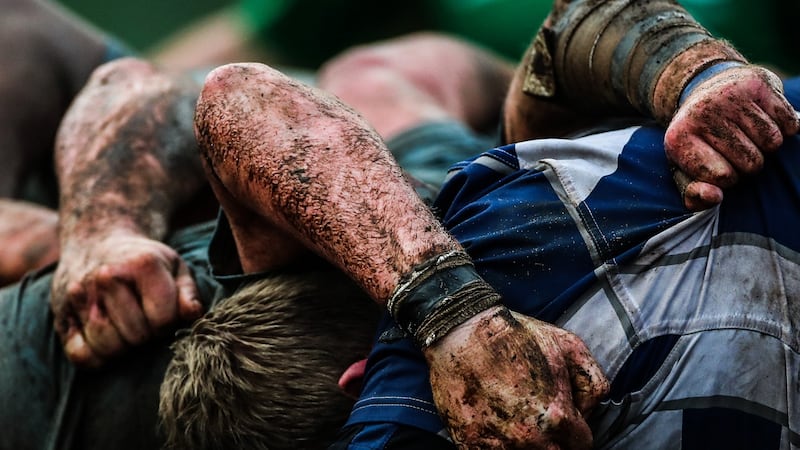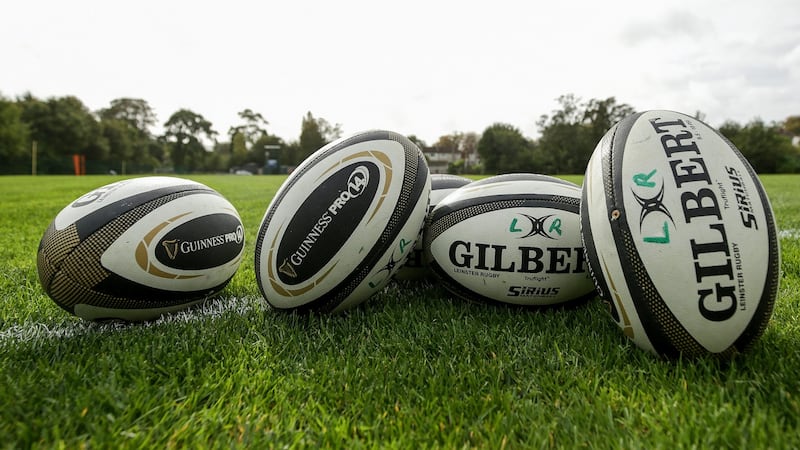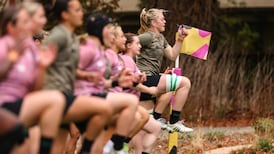Dr Éanna Falvey, World Rugby’s chief medical officer, believes there will be competitive rugby before the end of the calendar year, most likely beginning with domestic provincial or club games before progressing to Test match rugby.
“I wouldn’t rule it out at all. In fact I would be very surprised if there isn’t some competitive rugby before the end of the year. I wouldn’t be surprised if there is quite a bit of competitive rugby and I would say that we are probably going to get cleverer in how we can monitor players.”
Falvey also reckons that New Zealand and Australia are best placed to instigate that return. "They are probably reasonably close in getting back into competition, and certainly into training."
Contrary to some interpretations of the World Rugby document outlining the guidelines for a return to training and to play which he co-authored, he maintains that competitive rugby need not necessarily be played behind closed doors until a vaccine is found.
Furthermore, Dr Falvey disputes the common view that rugby is inherently more likely to risk spreading the Covid-19 virus than other contact team sports.
“I was actually quite disappointed to see rugby was categorised with judo and wrestling in the Irish guidelines, and separated from Gaelic football and soccer.”
But Falvey also admitted that all of these prognoses hinge on the potential for second waves or new spikes in the coronavirus pandemic which could in turn see governments in certain rugby-playing countries re-imposing restrictions.
Falvey assumed the role of chief medical officer with World Rugby in January of this year, having previously served as the body's deputy medical officer. He has been involved in rugby since 2003, and has served as team doctor with Munster, Ireland and the British and Irish Lions.
We can all agree that there is very little chance of the July tours going ahead as things stand. When do you see international rugby returning?
What we’ve outlined there [in the WR document] is that really – without giving you a Kerryman’s answer – it depends on what you define as international rugby. For example, in countries like New Zealand and Australia, they are probably reasonably close in getting back into competition, and certainly into training.
Then I think you’ll see Australia pushing on quite aggressively into competition. I think the NRL [Australia’s rugby league] will be the first back and it will be very interesting to see how that goes, and they’ll be followed very quickly by sports like AFL [Aussie rules] and probably rugby union in Australia as well. Again, that will be a local decision.
When you see two countries like New Zealand and Australia that have very successfully flattened the curve and have a very low rate – R nought – of infection in their country, they may well decide that they’re not going to have quarantine between their borders and allow teams travel under strict restrictions.
How we would see a potential progression for this [rugby returning] would be that once you get full squads back training you then would progress on to squads doing contact training. Once you’ve done contact training and you’ve completed a proper pre-season and gotten players safely ready to play, you would then be looking to play local games.
For example, you would have interprovincial games in Ireland. The next step would be to have short-hop transfers between countries that are in similar stages in their disease process. You could have matches between Irish and Welsh, Irish and Scottish, Irish and English teams, depending on what that would look like.
That may well then show people that it is less risky than we thought and, in the absence of an outbreak, it may facilitate further travel and proper international rugby.
Again, without being vague about this, it’s very difficult to say what’s going to happen in four or five months’ time when we really don’t know what’s going to happen in a month’s time. If we see a relaxation in measures and because of those relaxations we see a spike in a particular country, that country may actually restrict further.
That’s why we’ve recognised early on that this needs to be a kind of a ‘trans-global’ approach. Every country having different standards and rates of disease means that having a uniform approach to this is not possible. We got information back from 80 CMOs [chief medical officers] around the world, and now we basically have a model that we can follow up on a weekly basis.
Getting the information from all those CMOs has underpinned this document and what we’re trying to do here is being responsive to the difficulty that unions are having, but to try and give them something that is useful, is compliant with WHO guidelines, and puts player welfare number one, but is also flexible enough for them to use it in the context of their own country.

So you don’t rule out domestic rugby matches and then international tests being back before the end of the calendar year?
No, I wouldn’t rule it out at all. In fact I would be very surprised if there isn’t some competitive rugby before the end of the year. I wouldn’t be surprised if there isn’t quite a bit of competitive rugby and I would say that we are probably going to get cleverer in how we can monitor players.
We’re at a very early stage in this, and as the testing gets better it may well be that we can be a lot surer about how disease-free squads are, and if you can get teams together and limit the exposure, you may well be able to have quite a good deal of competitive rugby with a very low risk. And this is about mitigating risk. That’s the primary objective.
After such a long and unprecedented break from the game, from the point they return to full contact training, how much of a pre-season would players require?
We haven't been prescriptive around that because each country will have a unique approach to that. The approach in France will be different from England and from Wales etc. I think the return from restrictions will actually be quite helpful for us because it will be staged and graded, from fitness and strength work, to then returning to team activity.
You’d be looking at, realistically, something which mirrors a normal pre-season, so a minimum probably of four weeks.
Do you envisage clubs, provinces and unions having to purchase testing equipment themselves?
I don’t think so and I think that would be very much dependent upon what the situation is in given countries. In Australia that would not seem to be a requirement. In Australia it would appear there’s a national capability. The disease incidence is quite low so the country is pushing very hard around testing and encouraging testing. Basically that would be something that’s an engagement between the union and the government.
If you’re looking at other countries where the testing facilities aren’t quite up to where they need to be, and frontline healthcare is a priority, then certainly you would not be expecting a professional sport to be availing of those resources.
You are obviously watching other sports closely. The Bundesliga looks like it will be one of the first team sports in Europe to return. Is its progress going to be something you will use as a case study?
Yeah, we're actively liaising with the NFL, with Fifa, with the footballing codes in Australia. They would be the sports that are closest to us in terms of the issues that we would have and the risks associated.
Certainly the Bundesliga are out in front because Germany are out in front. Their health system has been able to manage this extremely well to the point they were taking cases from France and Italy at one stage.
They also have a significant testing capacity. Their system is based on very stringent and regular testing as part of their protocol and it will be revealing for every other sport to see just how well the Bundesliga actually goes.
Right now, the data would support the use of PCR [polymerase chain reaction] testing only, the use of antibody testing, doesn’t seem to give us the type of information that we hoped that it might a couple of weeks ago. That may change and we’re monitoring that on a weekly basis.
Again, it’s very much a country-by-country basis and we’re watching all of that extremely carefully.
As part of putting squads in quarantine, after spending so much time with their families lately in some cases, is it possible that players will then not have any contact with their families?
There are a number of schools of thought on that and the advice that we’ve been giving unions is that they should probably get the advice of their own government on that. For example, the Bundesliga will be performing PCR tests on their players the morning of the game. If the game is on early, the PCR test will be done the day before, and in that scenario they’ll then be asking players to limit their contact with other people in between the test and going to the game.
So should you keep all your squad in a hotel? The reality of the situation is we don’t really know if a hotel is any better for a player than staying in their own home because of the new exposure of rooms, of staff, of travelling to and from a hotel. That’s again something that will evolve in time.
There’s a theory out there that rugby union by its very nature carries a greater risk of spreading the virus than other contact team sports, such as Gaelic games and football. Would you accept that?
That’s something that we’ve been looking at. I was actually quite disappointed to see rugby was categorised with judo and wrestling in the Irish guidelines, and separated from Gaelic football and soccer.
Basically, without getting too pedantic about it, the term "contact" is used in epidemiology, by the WHO, and what contact means is whether or not you have been exposed to an infected person. So say Gerry Thornley is infected right now, the WHO guidelines say that me being a contact of yours means that I've been face-to-face with you, within one metre, for more than 15 minutes.
Another example of contact would be providing care for somebody who has been sick with Covid-19. Another would be sharing a house or a workplace or a classroom with somebody who has Covid-19.
Basically this means being in close proximity, because the data out there to date is around aerosol droplet spread – it’s not actually about physical contact if that makes sense. But we use the word contact in the epidemiology sense of the word, and I think that has bled into sport where it’s been conflated with the term physical contact. And what we’re looking at here is that we’re trying to tease the two of those out.
In rugby, probably the area for us which is going to equate to the highest risk would be the scrum/maul/ruck, and the rest then is very low because you’ve got lines facing each other rather than being in full contact.
The scenario that involves the head-to-head, and the head being in similar positions for the longest, up to a minute, is the scrum. At the moment in international rugby I think the norm is about 12 scrums per game. We see front-rows being substituted after 60 minutes, so you’re looking at your average front-row doing something like seven or eight scrums per game. So even if every scrum took a minute you’d be looking perhaps at seven to eight minutes of high-risk contact in that scenario. Our analysts are also looking at mauls and rucks.
Anybody would agree that if I tackle you around the ankles as you run past me, it is nowhere near the same risk to me as if I tackle you, we go to ground, and we wrestle for the ball, and are then at the bottom or a ruck for another 15 or 20 seconds.
But if you’re to look at that from the way it’s being analysed at the moment, the contact is exactly the same whether I tackle you around the ankles or whether our heads are in the same space for that period of time.
Obviously we’ve gone on a bit of a deep dive here, but the point I’m making is that there is an assumption that rugby has a far higher risk than Gaelic football or soccer does. But we don’t actually know that and that’s something we’re looking at.

If a player tests positive for Covid-19 the day before a match, is that match immediately cancelled and what other repercussions would there be? Would the rest of the squad have to be isolated or go into quarantine?
It depends on a couple of factors. The rules around that are that if somebody is symptomatic and tests positive, then for two days prior to that and for 14 days afterwards, anyone exposed to that person has to be quarantined and tested, and/or isolated.
So what you would be looking at doing in that scenario is that if you are tested on the morning of a game, or the day before, you can’t have trained in a high-risk manner for 48 hours prior to that, in order to make sure that you don’t have an exposure on the morning of the game.
But the reality of the situation is that while we have an ongoing Covid-19 pandemic, if somebody tests positive in a squad just before the game, you could be faced with that game not going ahead.
Similarly, if somebody tests positive the day after a game it may well be that both teams will need to be quarantined. You could have both of those two teams out of action for two weeks. These are the realities of the situation in terms of what it means.
The Korean K League is back, so football is back in South Korea, as is baseball, and they are exactly the types of scenarios they have outlined.
Are you saying in your report that even semi-full stadia cannot happen until there is a vaccine? Or, put another way, can there be crowds at games before an effective vaccine is widely available?
Yes, there can. Once we have games played, we will have crowds. The size of the crowd won’t be determined by World Rugby or by the individual union. It will be determined by the government, and the limitation on public gatherings will decide the size of crowds at games.
For example, where social distancing must be maintained and groups of no more than 5,000 people can be in one place, then that will limit your crowd to just that.
As those measures relax, the crowds will get bigger. And forecasting into the future, we can’t make decisions without the information that we will have later. So if there’s more information around what the actual infection rate in society is, what the herd immunity is, what the treatments are and what the possibilities around testing are, this will all factor in when it comes to government decisions.
That’s what will decide whether we have full crowds at games, but before that we’ll have the crowds that are permitted under the guidelines of the individual government.
Do you have a best-case scenario or worst-case scenario in when you believe that competitive rugby might return?
My feeling on this is that if you look at the Irish Government’s template which is there at the moment, that has a return to matches in August. The Government has been quite careful not to stoke anybody’s expectations higher than they should be and we would look to try and work in and around that.
If the Government measures are relaxed, as they’ve shown in their document, then we should have rugby in July, and then from our viewpoint, it’s a long way from August to October or November. I don’t really think there’s a great deal to be gained from planning in the absence of information, and what we’re doing at the moment is we’re planning with the information we’ve got and then monitoring really carefully so that we can plan with new information as it arrives.
But the number one thing in all of this, which I think might be one of the misunderstandings of the [World Rugby] document is that this doesn’t dictate return to sport or crowds at games. This describes a framework for going back to rugby against a background of the relaxation of government restrictions. As governments relax their restrictions, that’s when we’re going to see the game return, so I would actually be quite hopeful that we will be back in activity.
There’s a possibility that there won’t be rugby [before the end of 2020] but there are also a few other issues around this. It’s not just the welfare of the athletes – like all sports, it’s the societal good and the benefit that the country will gain from there being teams to support. It’s been one of the big blows to society during this crisis, the lack of sport to actually talk about.
The greater good is something which has to be looked at and I think rugby, and unions in particular, need to put their case forward in this. As a sport we need to show we’re being as safe as we possibly can and that we are listening to the guidelines. But we also need to outline how we can do this safely so that governments will be emboldened enough to allow the sport to get back into activity.




















